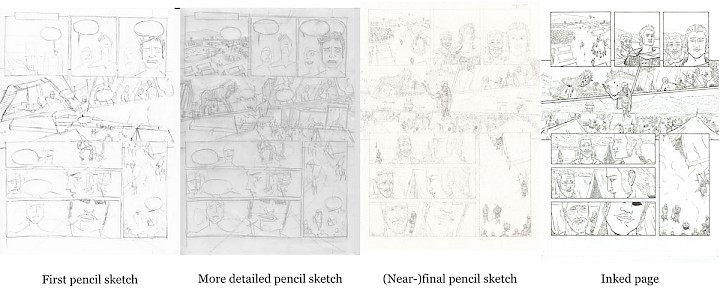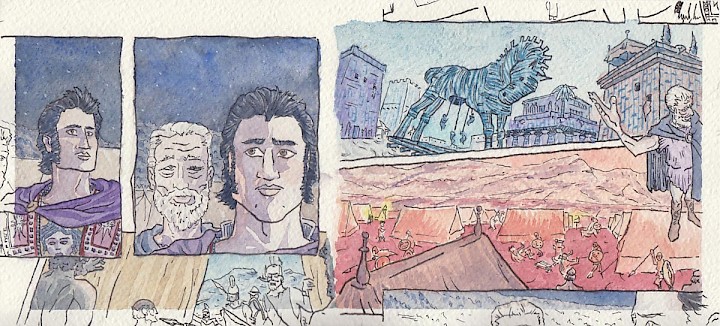Graphic History
The next issue of Ancient Warfare deals with the empires of Persia, from the founding of the Achaemenid dynasty to the period of the Sassanids. It was high time we devoted an issue to the ancient inhabitants of Iran and I’m very happy with how the issue has turned out. It’s available for pre-order now (but you probably have a subscription, right?).
With each new issue of Ancient Warfare, I always look for a way to shake things up a bit, by varying the lengths and topics discussed in articles, by shifting certain features around, and so forth. I’m very happy when I’m able to introduce something new that adheres to the company’s motto of making history accessible and fun. In this latest issue, I’ve introduced a new department called ‘Graphic History’.
It’s a two-page spread, like the ‘Reenactor’, and features a comic on the right-hand page. On the left-hand page, there’s an article detailing the sources for the story shown in the comic, which goes into a few details as regards the choices made in the final product. This new department is a collaboration between myself, as writer and letterer, and talented Italian comic book artist Fausto Bica, who draws and paints the beautiful artwork.
Creating a one-page comic
Let’s go through the process for a moment. First of all, doing a single-page comic is quite an exercise in restraint. In this case, I started with a simple idea: an anecdote written by Plutarch about how Alexander refused to attack the Persians at night, as he didn’t want to ‘steal’ his victory.
The anecdote may well be apocryphal, but it highlights the kind of character that people in the ancient world believed Alexander possessed. There’s also enough detail in Plutarch’s text regarding setting and other characters. Having read the original source, I wrote out a summary, then sketched out panels on a blank piece of paper, trying to figure out how much space we’d have to work with. I then wrote a script, detailing for each panel what I’d like to see and what the texts should read. I sent this to Fausto, who provided me with valuable feedback and then proceeded to send me sketches. This went fairly quickly, and he was soon able to start adding details in pencil.
There was some back-and-forth as we tried to get all the details right. What, for example, would Alexander’s camp have looked like? There’s not a lot to go on based on the ancient sources, so we mostly went with what felt natural to us: simple tents and a corral for the horses. Once we were happy with the sketch. Fausto started to draw up the page in pencil, adding details, and finally inking the whole piece. Here’s an overview of the different stages:
Once we were both happy with the inked page, we had to decide what kinds of colours to use. Fausto sent me a few options and I picked the one that seemed to fit best with the overall mood of the story that we were trying to tell. Here’s an example of one of the options that Fausto sent me:
Once Fausto was done, he sent me the finished page so I could add the captions and speech balloons, and fill in the texts. I did this in InkScape, but any vector-drawing program, such as Adobe Illustrator, would work fine for this. Once everything was in place, I exported the digital file at 300 dpi, ready for print.
You can read the comic in Ancient Warfare issue X.5, which is available for pre-order now.


